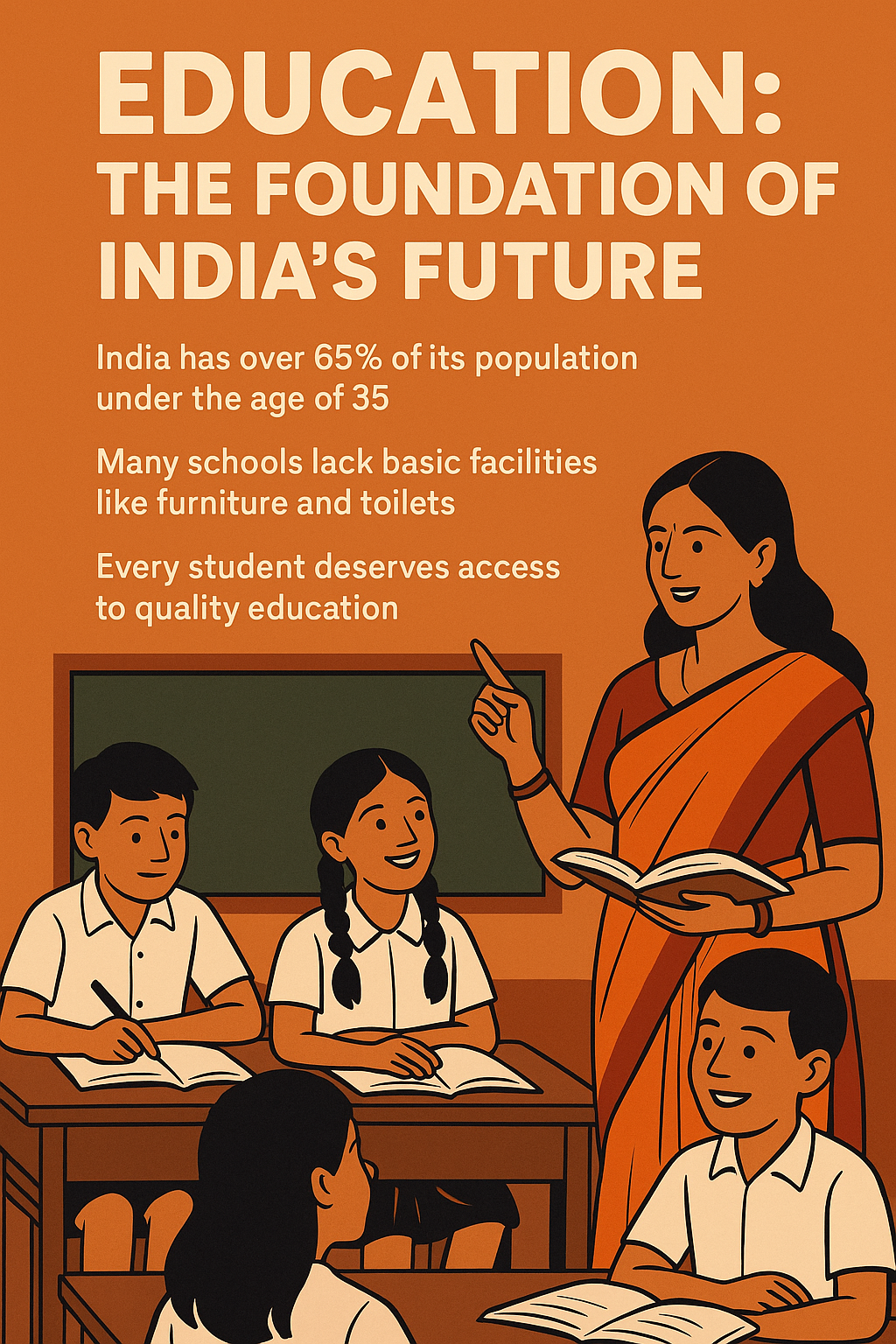
Education: New Reforms Required
Author: Manojkumar Chittimalla
Education: India’s Greatest Investment for the Future Education is the cornerstone of any nation’s growth, and for India, it carries even greater importance. With the largest youth population in the world—over 65% under the age of 35—our country’s future depends on how well we nurture, educate, and empower this demographic. A strong education system is not just a pathway to individual success, but a force that can transform families, uplift communities, and accelerate national development.
The Harsh Reality of India’s School Education
Despite this potential, the primary and secondary education system in India faces serious challenges. Across many states, schools lack even the most basic infrastructure—proper benches, functional toilets, clean surroundings, and safe classrooms are still luxuries rather than essentials. Forget about advanced digital learning labs or modern teaching facilities; many governments schools struggle to provide a healthy learning environment.
The annual budgets allocated to education are often skewed. A large portion goes towards paying teacher salaries—while school development, infrastructure, and innovation receive only a fraction of what is truly required. Unless the government rethinks its priorities, these structural gaps will continue to hold back millions of children from realizing their true potential.
A New Approach is Needed
To overcome the deep-rooted challenges in India’s education system, the government must adopt bold, innovative reforms that empower parents, ensure equity, and strengthen both government and private institutions. A reimagined model could work as follows:
- Parental Choice of School – Every parent should have the freedom to decide whether their child studies in a government or private school. Quality education should not depend on affordability.
- Direct Fee Reimbursement for BPL Families – If parents from Below Poverty Line (BPL) families choose private schools, the government should directly reimburse the tuition fees to the institution on a quarterly basis under strict monitoring and guidelines. This eliminates middlemen and reduces corruption.
- Strengthening Government Schools – At the same time, the government must invest in strengthening high-enrollment government schools by improving infrastructure, teaching standards, and facilities—so parents who choose government schools feel confident in the quality.
- Support for Residential Schools – For children enrolled in private residential schools, the government should also cover hostel fees for BPL families, ensuring that socio-economic background does not block access to better opportunities.
- Transport for Accessibility – If the nearest government school is far from the child’s home, the government should provide free bus passes for the child and one parent, ensuring daily access to education without financial burden.
- Teacher Allocation Based on Student Strength – Teacher deployment should strictly follow the student-teacher ratio prescribed in government rules. If a school has fewer students, its teachers should be reallocated to high-strength government schools—or even deputed to private schools—while the government continues to pay their salaries. This ensures no teacher resources go underutilized.
These ideas represent a broad framework. Any final approach must be shaped through collective decisions, with active input from all stakeholders—parents, students, government authorities, government school teachers, and private institutions—to ensure the model is practical, inclusive, and sustainable.
The Numbers Tell the Story
India spends around 2.9% of its GDP on education, far lower than developed nations that spend between 4% and 6%. According to reports, over 50% of government schools lack proper furniture, and nearly 40% still do not have functional toilets for girls. Digital infrastructure is limited to less than 25% of schools nationwide. These numbers show us the stark reality—we have a long way to go before achieving true educational equity.
Role of Donors and Corporates
While the government has a central role, this responsibility cannot rest on its shoulders alone. Individual village donors, philanthropists, and corporates must come forward to support government schools. Investments in infrastructure, libraries, digital classrooms, and teacher training can transform the learning experience. Public-private partnerships, CSR initiatives, and community contributions can bridge the gap and ensure that every child—regardless of background—has access to quality education.
Published on 27 Aug 2025
Back to Articles